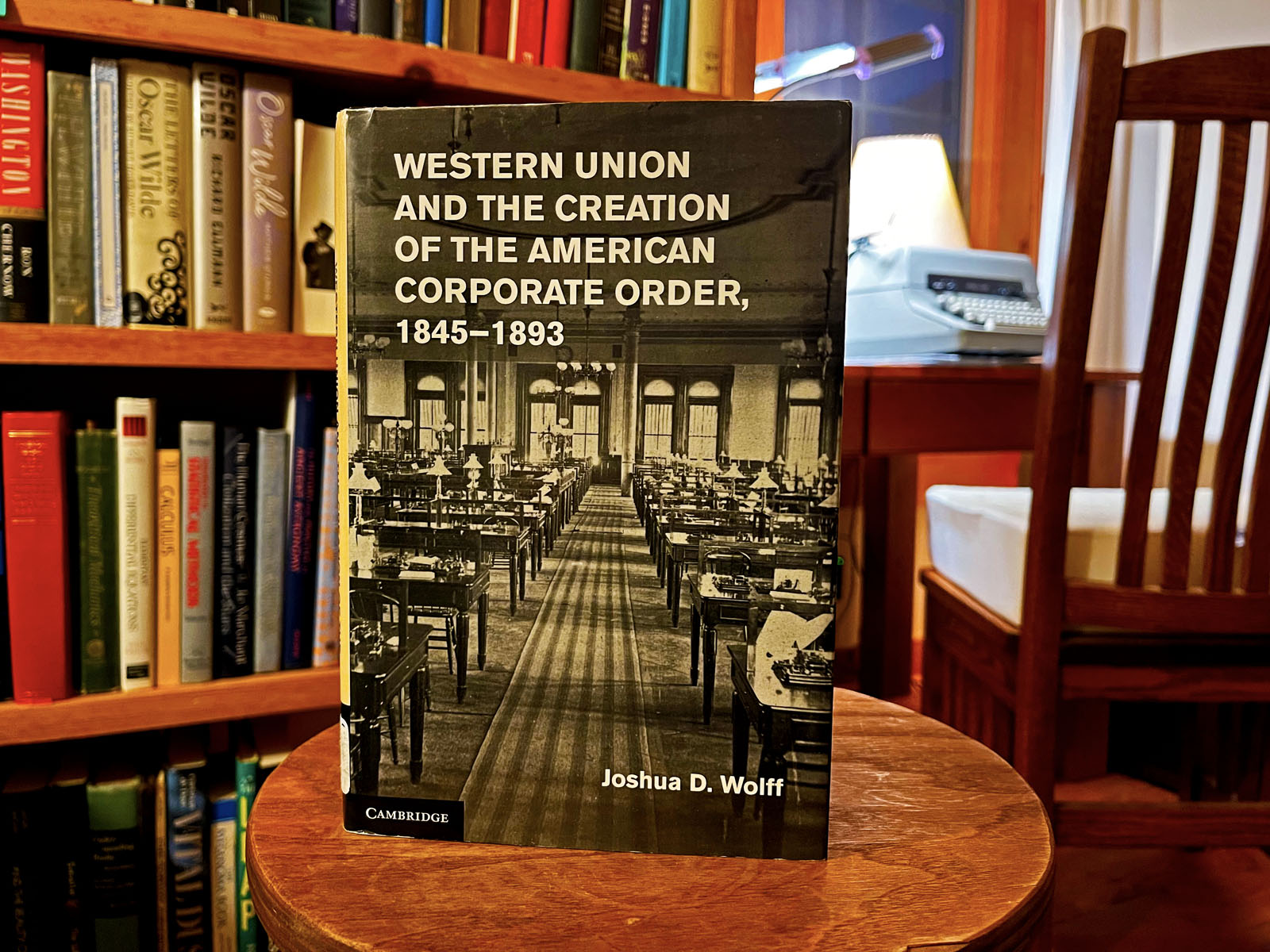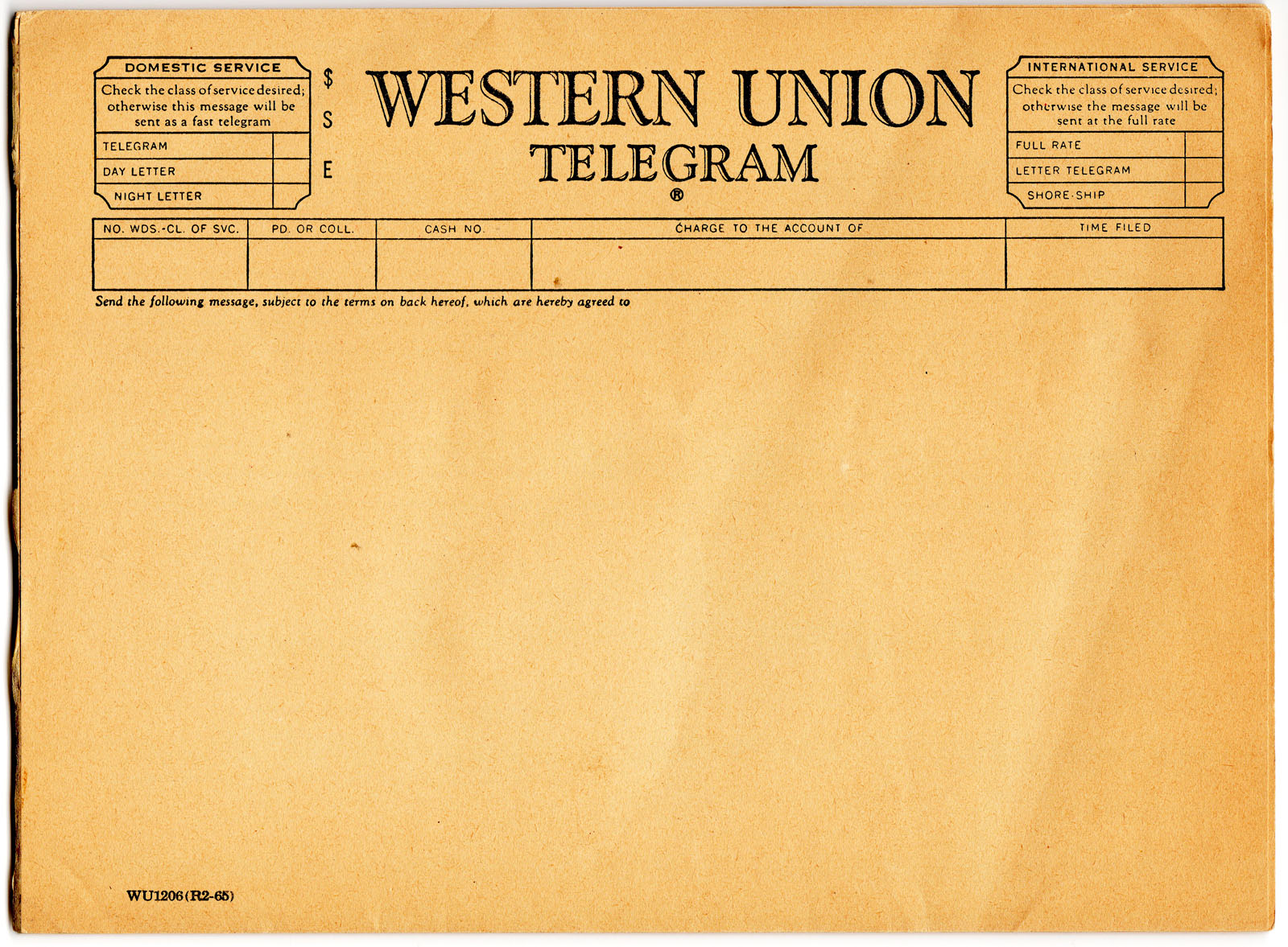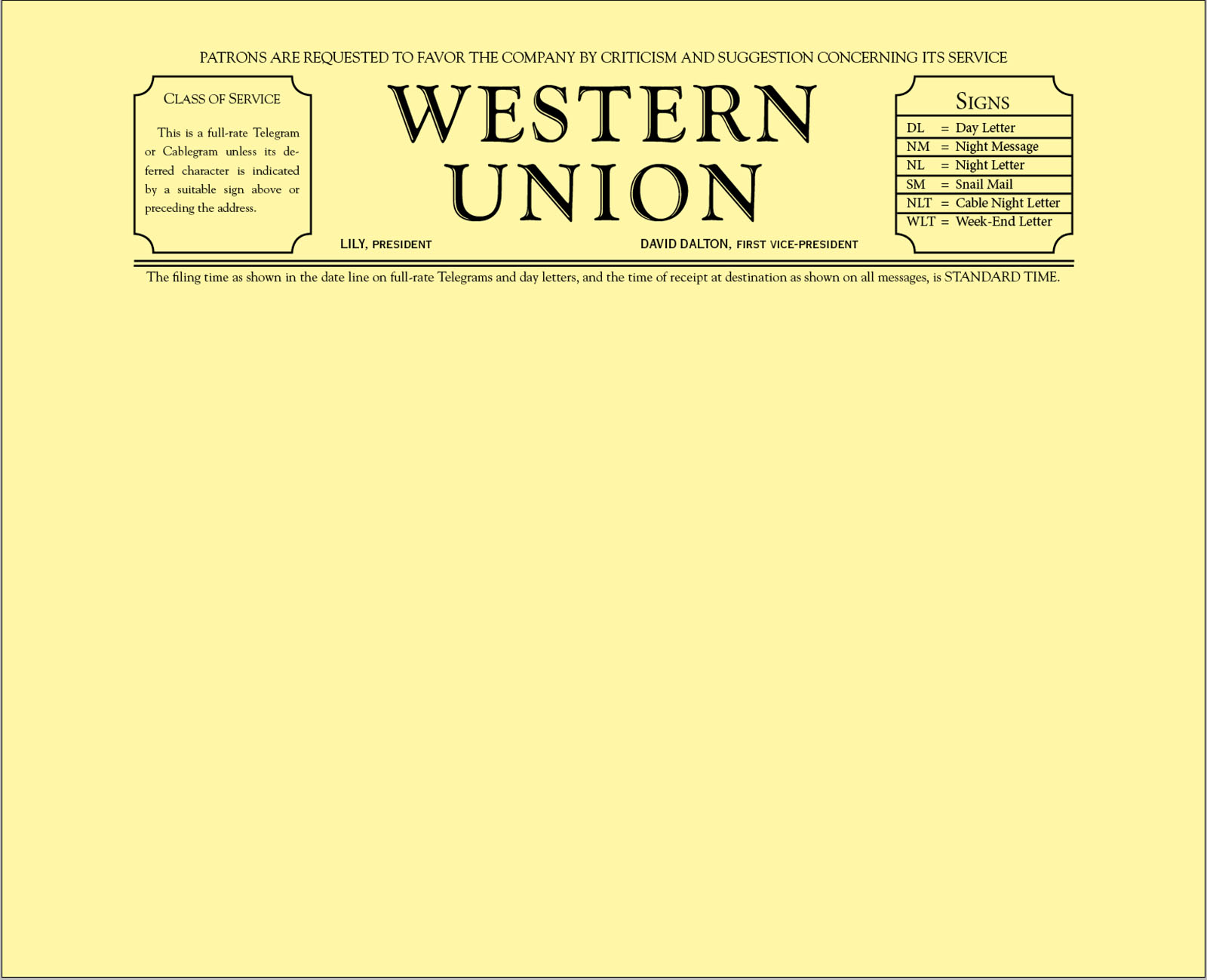
Western Union and the Creation of the American Corporate Order, 1845-1893. Joshua D. Wolff. Cambridge University Press, 2013. 306 pages.
There probably are not many people who think about Western Union today, but I do. In many ways, the disruptive creation of Western Union in the middle of the 19th Century resembles the creation of the Internet in our era. The radical improvements in the speed and cost of communication changed everything. Before telegraphy, communication relied on the U.S. Post Office Department. And the 19th Century U.S. Post Office was no slouch. By the time telegraph companies were getting started, the Post Office had shortened the time to move mail between New York and New Orleans from two weeks to five days, even before railroads. The Post Office also was cheap. Telegrams never were.
Telegraphy in America started as a motley and unstable group of unprofitable and technologically unsophisticated small and local companies, using technology invented by Samuel Morse, or variations that evaded Morse’s patents. It was consolidation and monopoly that, whether we approve of monopolies or not, allowed a new company named Western Union to buy up small, unsuccessful, and poorly connected local companies and convert them into a united monopoly network that connected distant parts of the United States. Before long, telegraph cables reached across the Atlantic as well.
This is a book about Western Union as a corporation and business. I wish I could find a book about Western Union’s technology and how it changed over the next one hundred years. I’ve mentioned here recently that my first job was as a newspaper copy boy in 1966, when Western Union very much still existed. Sometimes, reporters who were on the road would file their stories by Western Union telegram, and it was part of my job to walk down the street about five blocks to pick up the telegram from the Western Union office. A bit later, most newspapers had a Telex machine for such purposes. That was a later stage of Western Union technology that allowed companies that could afford it to have their own Telex teleprinter at their office, which did not require a dedicated phone line to operate. Telex was like a dial-up system for delivering telegrams that used the long-distance circuits only when needed. It was the Telex system that, in Western Union’s last years, linked the farflung offices of multinational corporations.
I have many curiosities about how the old telegraph network worked. I know from The Rise and Fall of the Third Reich, for example, that it could take hours or even a day or two for a telegram to travel between Berlin and Moscow. Though electricity, of course, moves at the speed of light, the old telegram network did not have wires that directly connected every place on earth with every other place on earth. You’d be able to send a telegram from New York to Philadelphia in one hop. But some telegrams had to be forwarded from one city hub to another, with multiple stops before reaching the final destination. The message had to be transcribed and then rekeyed at every stop.
These days, it’s only novels — particularly detective novels and spy novels — that remind us that Western Union ever even existed. Western Union’s history is very closely connected with the railroads, though of course railroads survived in a diminished form and Western Union didn’t survive at all. (Western Union still exists as some sort of vague financial entity.)
If you’ve ever held a fresh telegram in your hand, though, as I have, you can’t help but remember their beautiful typography. The format changed over the years, but there basically were two forms. The first form was a pad on which the customer wrote, by hand, the text of the telegram and checked off some choices about how it was to be sent. The second form was the telegram after it was received at the destination, on a yellow sheet of paper 8 inches by 5.5 inches with the classic and beautiful Western Union logo at the top. The font used for the text “Western Union” is a variation on the Goudy font named Goudy hand-tooled. I’ve included two examples below. The first is a scan of an actual Western Union pad for outgoing messages, bought on eBay. The second is my own reproduction of an incoming telegram as they looked in the 1940s.



It’s a bit of a coincidence David as I was in County Kerry yesterday and we drove past Valentia Island, from where the first transatlantic cable was laid. The hotel we stayed at had a section of the original cable in a display cabinet. As I’m sure the book says the first cables were astounding achievements. Not least as they kept breaking, and ships would have to go out and repair them. Apparently they would track the line of the cable with electric pulses, then send down grappling hooks to pull up the two ends and splice them together. Given the Atlantic is 4000 meters deep in places is incredible what they achieved with Victorian technology.
Hi Chenda: Yes … it was amazing what 19th Century technology was able to do. The other end of that cable, by the way, was in Newfoundland. Cables were laid from New York to Newfoundland as a preparation before the transatlantic cable was even started.
County Kerry! Dingle is my favorite place in Ireland, though I’m not sure I’ll be able to go back. When I travel these days, which is rare enough, Scotland is the destination.
David
My questions is, did it really state at the top Patrons are requested etc, criticism?
My Uncle Tony started with Western Union in San Francisco around 1927 until he retired in the 70’s, sold his San Francisco house and moved to Sonoma near Vella cheese company, worked with them and finally raised sheep and walnuts until his passing at 90′ Used to tell stories about SF and the folks who came in to WU.
I worked for Western Electric in the early 70’s and its no longer a physical entity. A wonderful company too
Hi Henry: They really did have that line at the top! There are lots of old telegrams for sale on eBay … that’s a good place to see examples of what they looked like. The San Francisco office of Western Union in 1927 … what a fine place to work that would have been!